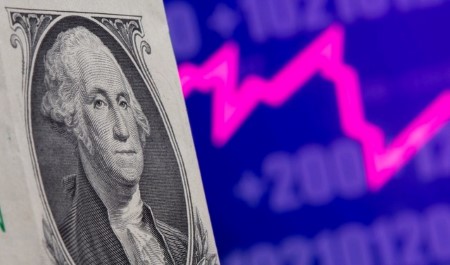




Inflation Update: Green light for easing
 DOWNLOAD
DOWNLOAD

December Economic Update: One for them, one for us
 DOWNLOAD
DOWNLOAD

Philippines Trade Update: Trade trajectories trend along
 DOWNLOAD
DOWNLOAD


Hedge funds strike it right on dollar, yield curve: McGeever

ORLANDO, Fla., Aug 15 (Reuters) – Hedge funds slashed their long dollar positions and bet harder on a flatter yield curve, two macro trades that have come up trumps.
The dollar last week fell to its lowest level on a broad basis since June, while the yield curve inversion reached levels not seen in over 20 years.
The question now for currency and bonds speculators is whether they buy into the notion that inflation has peaked, the economy will achieve a soft landing, and the Federal Reserve won’t tighten monetary policy so aggressively.
That’s a scenario that could keep the dollar under pressure, but re-steepen the curve and get the 10-year yield back above the two-year yield.
The latest Commodity Futures Trading Commission report shows that funds cut their net long dollar position against G10 currencies in the week ending August 9 by USD 4.4 billion to USD 13 billion.
That is the biggest reduction since January, and net longs now are the lowest since April.
The move was driven by USD 1.7 billion shifts in both sterling and the Japanese yen. Funds’ net long dollar position against the yen is now just USD 2.3 billion, the smallest since March last year, and their net short sterling position is down to USD 2.6 billion.
The dollar weakened almost 1% last week and is down 4% in the last month. The dollar’s outlook now is certainly more balanced.
“Our sense remains that the dollar rally will resume before too long. It will take a lot more good news on inflation before the Fed changes tack,” Capital Economics strategists wrote on Friday.
INFLATION PEAK?
In bonds, the trend remains funds’ friend as the 10-year Treasury yield fell as much as 50 basis points below the two-year yield, resulting in the most inverted curve since 2000.
CFTC data shows that speculators increased their net short two-year Treasuries position for a third week, by more than 70,000 contracts to 172,221. That is now their biggest bet against two-year Treasuries since July last year.
In the same week, they trimmed their net short 10-year bond position by just over 9,000 contracts to 286,478 contracts.
A short position is essentially a bet that an asset’s price will fall, and a long position is a bet it will rise. In bonds, yields fall when prices rise, and move up when prices fall.
Hedge funds’ hawkish view on the Fed was also clearly reflected in their rates futures trades.
In the week to Aug. 9 they increased their net short position in three-month ‘SOFR’ rates futures to a record 797,342 contracts. The net short has doubled in less than three months.
This suggests speculators are betting heavily on the Fed keeping its foot on the rate-hiking pedal, perhaps pushing the fed funds policy rate well into ‘restrictive’ territory to make sure it gets inflation back down.
But consumer and producer price inflation figures for July released after the cutoff for the latest CFTC report showed a notable easing in price pressures. It’s only one month, but some investors’ outlook is changing.
“In the near term, risk assets should trade well, as we’re getting past peak inflation worry,” Citi strategists wrote on Friday.
(The opinions expressed here are those of the author, a columnist for Reuters.)
This article originally appeared on reuters.com





 By Reuters
By Reuters